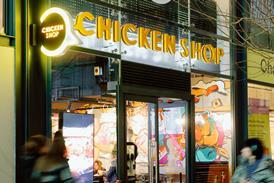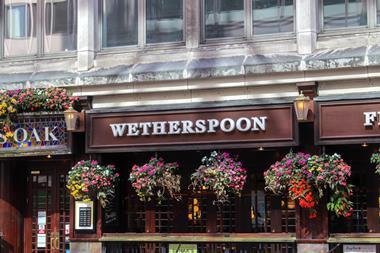If people are the common denominator in achieving organisational success and retaining them is the difference between relative success or failure, then operators must continually explore elements of the people puzzle that ‘they’ can control, influence and change, argues Fourth’s Karina Coen
The American business executive and commentator Jack Welch said, in 2014, that “if the rate of change on the outside exceeds the rate of change on the inside then the end is near”. A few years on, the statement feels more relevant than ever, especially if you’re working inside a hospitality group.
As we all know, the key battlefield for operators is people – getting them, keeping them, making sure that they offer return on investment, and that we also afford them return on their investment. It appears businesses in this sector that are moving from a profit-is-king mentality to people-driven businesses are winning. But, what does it mean to have a business where people really are at the centre of everything?
Importance of good culture
Businesses often talk about the need to protect good culture or drive cultural change. Retaining good culture, particularly as businesses grow, requires a persistence and a dogged determination from leaders to not compromise on the way they promised to operate. Culture goes a long way to determining people’s behaviour and whether they stay the course.
As an industry, perhaps we need to challenge some accepted norms on why retention is low. We need to address a perception that hospitality teams are fickle and transient, and drive accountability within our organisations at a senior level for churn, or rather, for retention.
There are challenges. Brexit and continued uncertainty is a threat, while team members will move for more money (but that’s old news), and some of the workforce is transient.
However, a recent survey exploring what would make employees less likely to leave found more than half (56%) said greater control over working hours and shift patterns, allied to more stable income and guaranteed hours. A third said more transparency from employers regarding future shifts and scheduling. Of course, 60% said better pay and benefits, but these areas feel like big culture opportunities.
Focus on forecasting
For operators to stick with the commitments they make on schedules they must have a cast-iron forecast, yet many perceive their businesses to be wildly unpredictable and, therefore, forward forecasting (say, pulling together schedules two weeks out) impossible. While there is volatility in any business, the degree of forecast error is often overstated. Most well-run businesses have high degrees of predictability across the week. Certain day parts and days are extremely predictable; others can be less so but, in these day parts, the margin for error is often not huge and, therefore, manning impact or risk is low.
Operators have to plan for all the ‘what ifs’ (the proverbial coach-load of guests unannounced) but managers can form habits over time. They will over-forecast at the beginning of the week to allow for cushion in the schedule, then, when it ‘doesn’t materialise’ they will knee jerk and send team members home – the individual that already didn’t earn many tips because its Monday, now has their shift curtailed. If this is a pattern, it leads to resentment, worry for future shifts and worries about money.
Managers will under-forecast the weekend in the hope they over deliver, claw back labour, and hit their numbers overall. For the team, this means being understaffed and so enduring stressful, longer shifts, with no breaks, missed opportunities to sell – reducing their tips and lower service levels. Again, it is a potential driver of resentment and annoyance, prompting perceived failings to adequately staff the business.
An accurate forecast goes a long way towards the creation of realistic schedules, which can be planned two to four weeks out. Relying solely on the manager to create a great base is a little unfair. Good managers know many things about how their businesses behave, but they are not data scientists and they rely on ‘feel’ more than data when making decisions.
Good data cannot do it alone either. The alchemy comes when good general mangers are presented with good data; then the continued magic of man and machine comes to life, and the base point (for the forecast) is hugely improved.
Don’t labour the point
Something else we are working with many operators on is labour budgets. Picture this ideal scenario; you’ve nailed the forecast, you have the predictability bit down, this has been translated into workload demand and the data and metrics tell you when to deploy your team by time slot. The manager uses this data to create a great schedule, deployment accuracy is 85%, and planned hours verses actual hours are close. But you still don’t hit your budget, meaning you don’t get your bonus.
We’re all human, and in the face of this, many will go against the data, cheat the deployment model, mess the team around (not intentionally, but it will happen), which increases employee turnover, and in turn means you don’t hit your targets again. Companies then get disheartened and move on to try something else. This perpetuating cycle is going on in companies up and down the country.
To mitigate this, CFOs need to use data that creates bottom-up schedules driven by activity and not desired spend or desired cost. For operators, there is often a taboo around labour budgets and the number of teams that believe budgets are ‘not right’ is truly alarming. In reality, by working with teams and pulling apart labour schedules, you can collaboratively make them work. On the few occasions you can’t, it’s almost always linked to low sales thresholds. Again, it boils down to culture, many operators have schedules foisted on them and so they challenge the hell out of them, but this can be avoided with collaboration.
Technology is front and centre in today’s world, but that doesn’t mean forgetting about the employees. Learning how to leverage the unique human element is key. Technology should be truly complementary; better forecasting, coupled with bottom-up activity-based schedules, coupled with great collaboration, paired with analysis and statistical information that tells you what’s working and what’s not, can all help with the ‘people factor’. Knowing what makes people tick, and giving them what they need to succeed makes holding them accountable to your expectations better, easier and healthier.
How the chef shortage could be filled by ‘assemblers’
The UK chef shortage is a well-documented problem that is going to be further exacerbated by Brexit. This shortage of skilled workers has driven up labour costs and created a perpetual cycle of chefs chopping and changing roles in pursuit of more money. But there may be another way.
Through our work reviewing operating models and building metrics that work with our forecast algorithm to determine workload demand, it became apparent that, for many businesses, they needed assemblers, rather than chefs for many elements of menu delivery. While chefs create the offer, assemblers can execute it at peak trading periods. They also need head chefs who can build production lines for busy periods (such as the Saturday night peak), but when the pass is full of tickets, skilled assemblers, who can time-manage, who are dextrous, who understand how to bump tickets and work the line, execute the service. The chef shortage isn’t going away and operators need to look closely at their operating models and review the required job spec when recruiting, or suffer perpetually inflating labour costs.
■ Karina Coen is director of labour productivity at cloud-based forecasting and cost control software provider Fourth




































